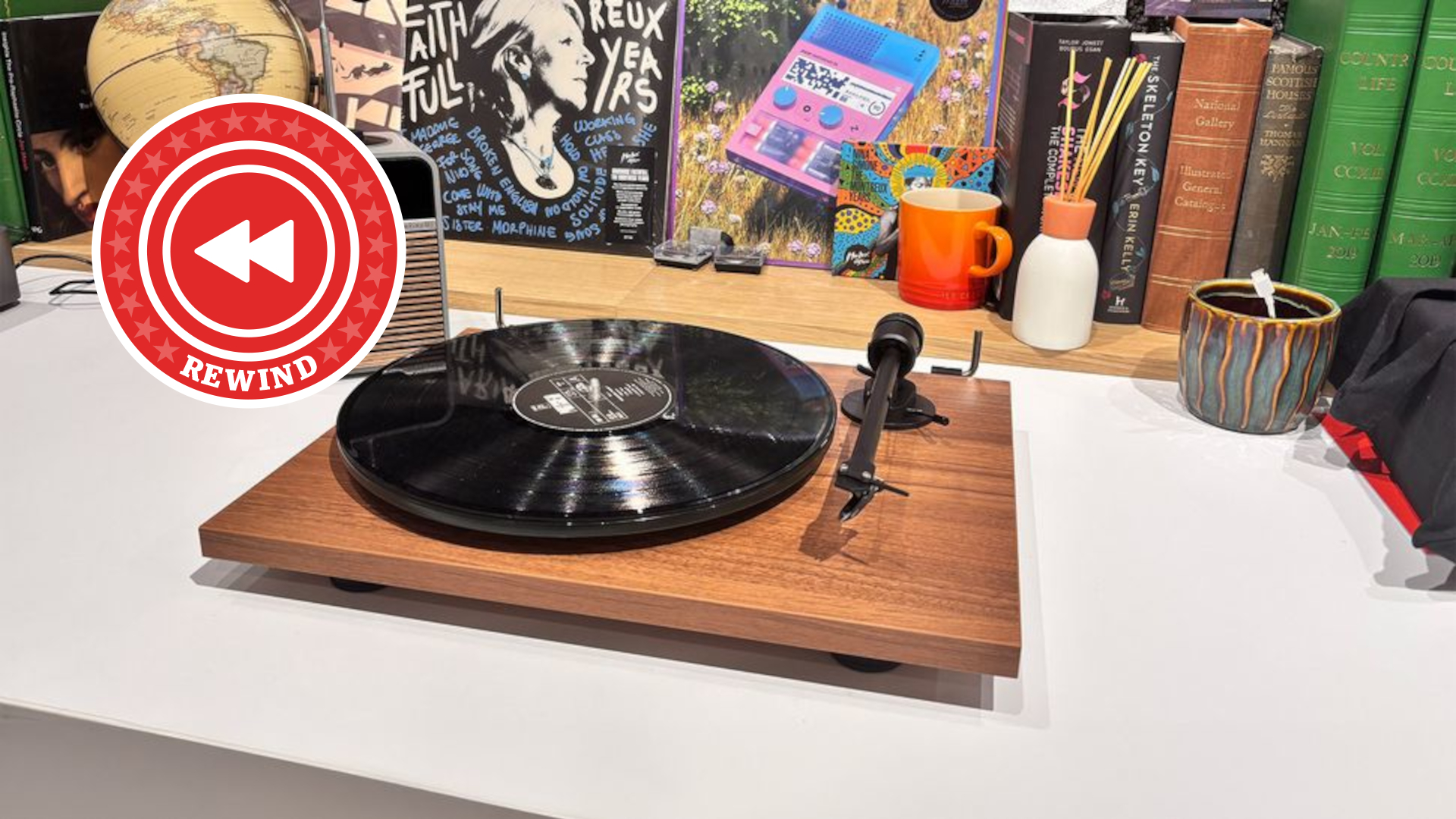What Hi-Fi? Verdict
Samsung’s Mini LED technology continues to deliver a class-leading LCD experience even at this relatively small screen size
Pros
- +
Impressive black levels
- +
Superb brightness
- +
Excellent game-friendly connectivity
Cons
- -
Dimming system occasionally distracts
- -
Unhelpful operating system
- -
No Dolby Vision
Why you can trust What Hi-Fi?
A lot has changed within the last year in the world of Samsung TVs. The Korean conglomerate has expanded both its Neo QLED (or Mini LED with a Quantum Dot layer informally) and QD-OLED (OLED with Quantum Dots) TV ranges with updated models and newer tech, meaning these once competing technologies now coexist peacefully under one brand.
That being said, Samsung's Neo QLED division has been running since 2021, meaning it has an extra year on QD-OLED, with the QN90B acting as last year's step-down model. While it is over a year old now, and has since been succeeded by the QN90C, it's still widely available and a very good TV, with the added bonus of being discounted fairly frequently these days; making this a top-notch TV at a compelling price - what's not to love?
Price
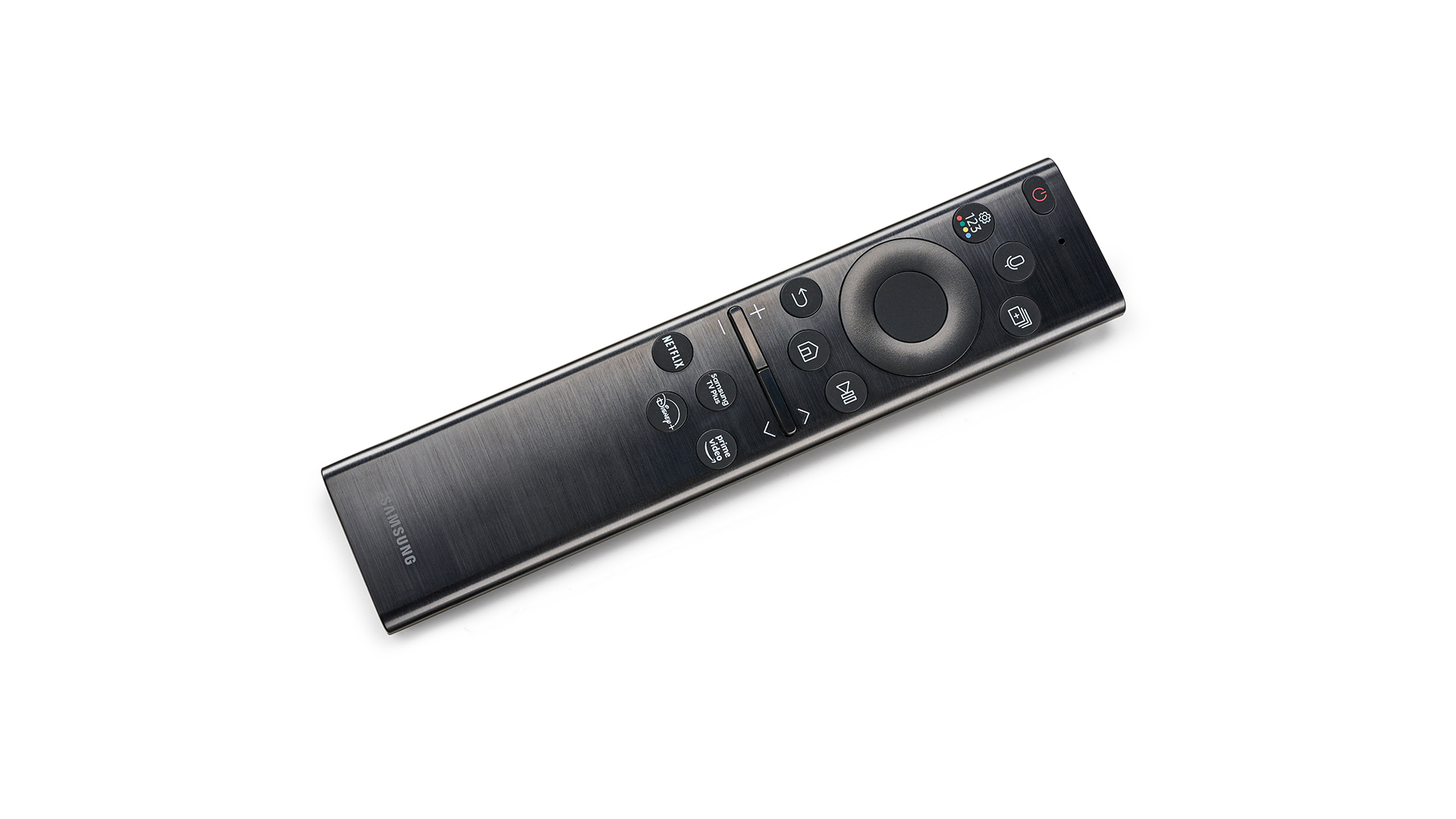
As seems to be the way these days, despite not launching all that long ago the QE50QN90B has already benefited from a pretty healthy price cut that’s seen it drop to £999 in the UK and $1999 in Australia (where it's called the QA50QN90B).
This turns out to be a pretty important cut too, since it brings Samsung’s flagship 50-inch TV for 2022 broadly in line with the price you’ll pay for LG’s slightly smaller (48 inches) OLED48C2 in the UK, and makes it vastly cheaper in Australia.
There are of course many 50-inch LCD TVs out there that cost way less than the QE50QN90B, some even joining the QE50QN90B in offering Quantum Dot technology. Those cheaper models, though, will not give you Mini LED technology or Samsung’s AI-bolstered picture processing system.
Design
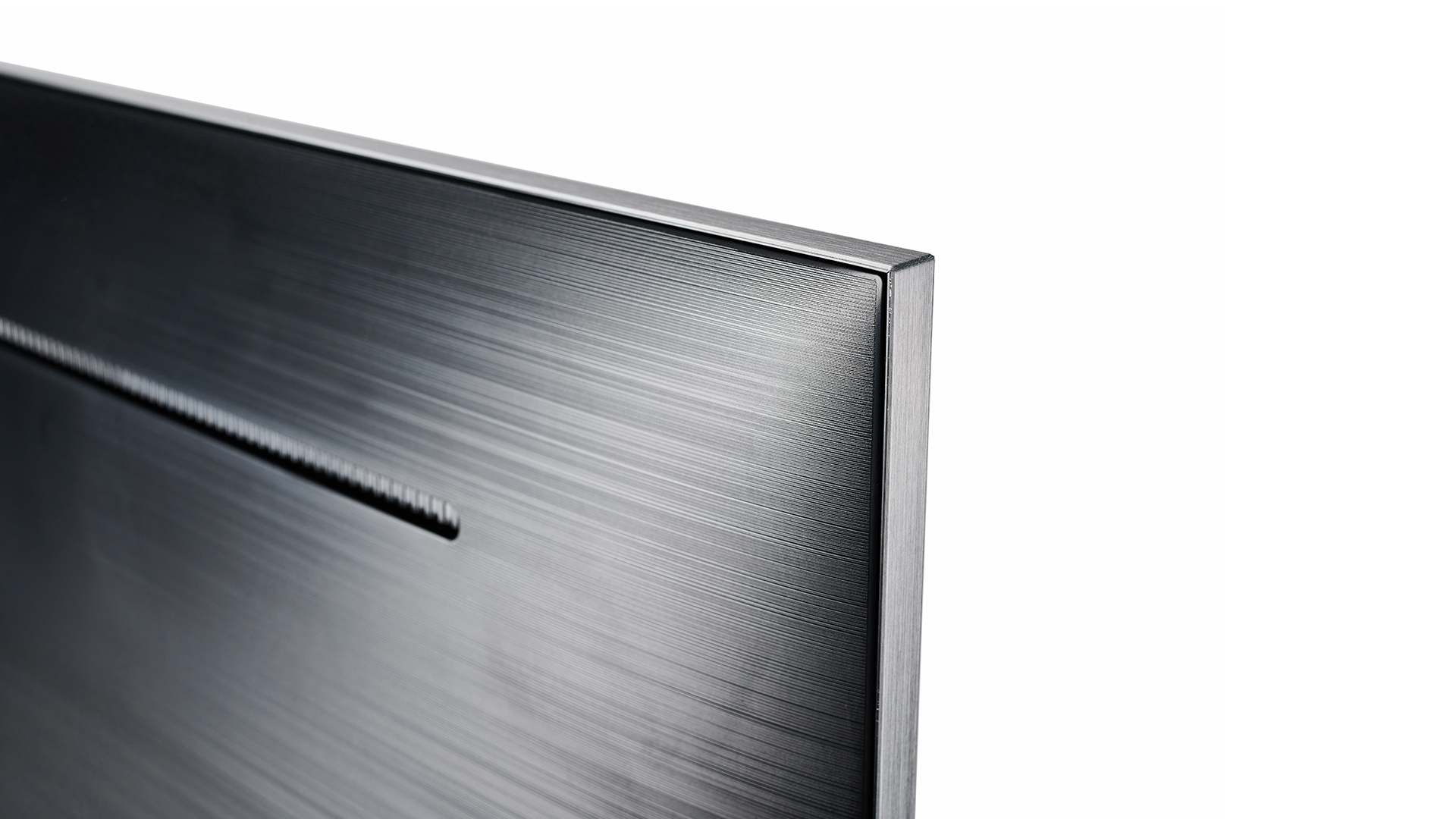
The QE50QN90B looks and feels a cut above the majority of the 50-inch LCD TV market. Its jet black frame is ultra-thin and crisply finished, and its black stand is both robustly crafted from brushed metal and centrally mounted, making the TV easy to place on even quite narrow pieces of furniture.
Samsung’s smallest Mini LED TV is also surprisingly slim round the back considering that it’s using direct LED lighting – though the LEDs in the QE50QN90B are, of course, much smaller (barely one-fortieth as big, in fact) than the LEDs found in regular LCD TVs.
As usual with Samsung TVs, the QE50QN90B ships with two remote controls, a standard, button-heavy one and a much sleeker one sporting a stripped-down button count for streamlined day-to-day use. This ‘smart’ remote excellently carries a built-in solar panel on its rear side, so you never have to worry about changing its batteries.
Features
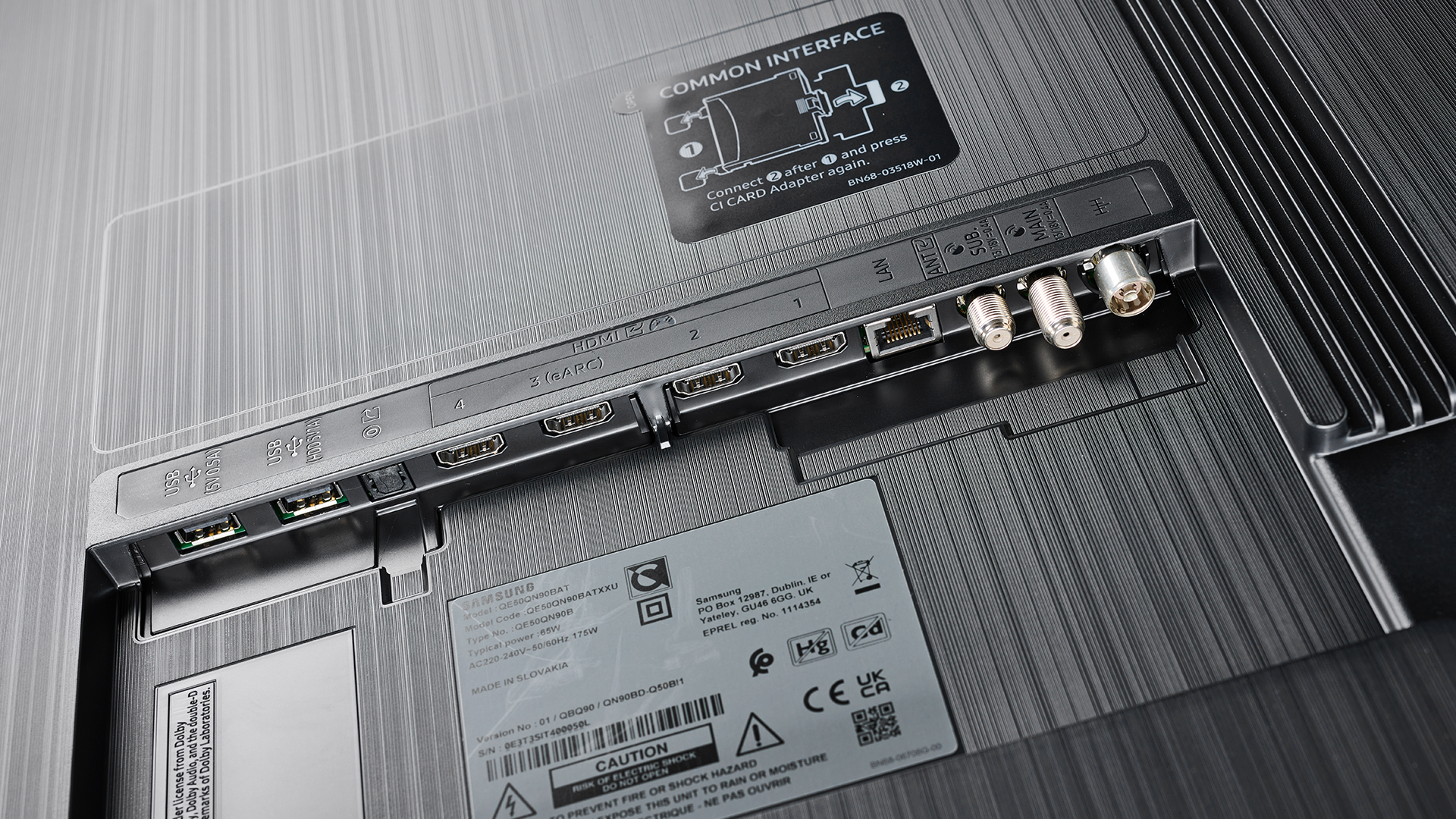
The QE50QN90B’s main event is its Mini LED lighting system, which crams far more and much smaller LEDs into the 50-inch screen than is possible with regular LEDs. This enables it to deliver more local light control and, potentially, more contrast and brightness than regular LED TVs can. Especially when partnered as here by a local dimming system which, in this case, sees the TV able to output different amounts of light from no less than 448 separately controlled zones.
Samsung has not, perhaps surprisingly, added more dimming zones to its 2022 range from the sort of numbers deployed in its debut Mini LED range last year. It has, though, introduced a new feature called Shape Adaptive Light Control that can tweak the way the light from each dimming zone addresses its part of the image. So, for instance, more light can be pushed to where a bright highlight of a dimming zone needs to be, while simultaneously reducing brightness at the zone’s edges if the bright highlight is appearing against a dark backdrop.
In other words, the Shape Adaptive Light Control has the potential to both increase contrast and reduce the issue of backlight blooming around stand-out bright image areas that local dimming can so often cause.
Samsung describes the QE50QN90B as a Neo QLED model, alerting us to the fact that it uses Quantum Dots to generate its colours rather than colour filters. This should, if other aspects of the TV are also up to snuff, result in a wider and more subtle colour gamut well suited to the extra colour range that typically accompanies high dynamic range content.
All of the QE50QN90B’s high-end picture features are marshalled by the latest version of Samsung’s Neo Quantum 4K video processor, complete with improved upscaling and the accumulated knowledge of numerous neural networks that have been busy crunching through countless image types in Samsung’s labs to develop a vast database of picture optimisation shortcuts.
If you’re wondering at this point how Samsung’s QN90B range differs from the more expensive QN95Bs, aside from tweaks to the design the only really significant thing is that the QN95B uses an external connections box, while the QN90B’s connections are built into the TV’s bodywork. Note, too, that there’s no 50-inch QN95B; that step-up range begins at 55 inches.
Despite being built into the TV rather than an external box, the QE50QN90B’s connections are impressively comprehensive. In particular, all four HDMI ports are capable of handling the 4K 120Hz feeds now achievable from the Xbox Series X, PS5 and some premium PC graphics cards. There’s support across all the HDMIs for VRR too (including the AMD Freesync Premium Pro system), and for the ALLM system that can turn the TV’s Game mode on and off depending on whether a console or PC is outputting a game or video source.
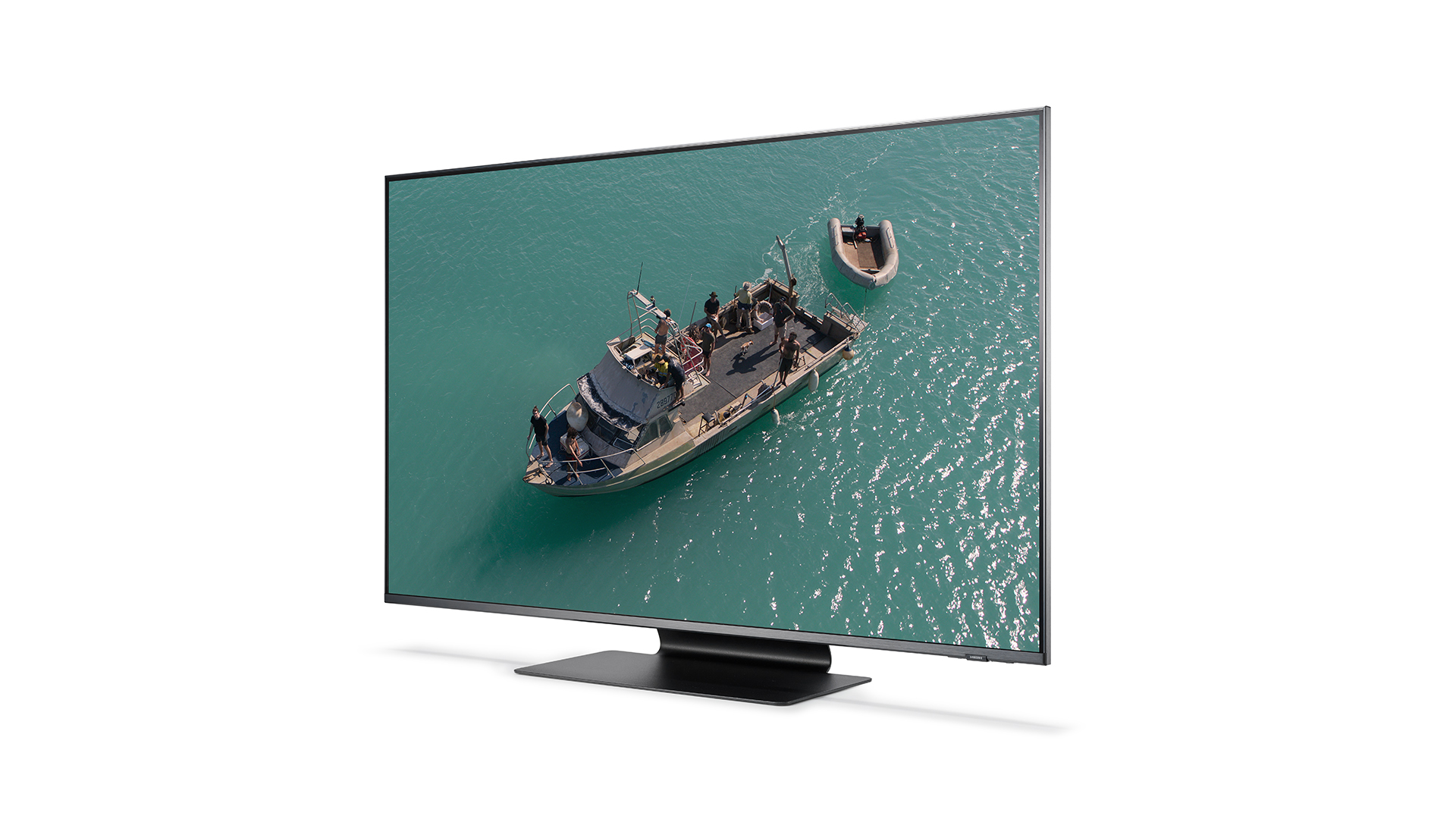
Screen size 50 inches (also available in 43in 55in, 65in, 75in, 85in)
Type QLED
Backlight Mini LED
Resolution 4K
HDR formats supported HDR10, HLG, HDR10+
Operating system Tizen
HDMI inputs x4 (40gbps HDMI 2.1)
Gaming features 4K/120, VRR, ALLM
ARC/eARC eARC
Optical output? Yes
Dimensions (hwd, without stand) 64 x 111 x 2.7 cm
What’s more, despite the sophistication of its processing engine and lighting system, the QE50QN90B manages to get the time it takes to render images in its Game mode down to a hugely impressive 9.6ms (with 1080p/60Hz signals). Samsung’s Game Bar does, though, provide the option to sacrifice a bit of screen response speed in return for better, processing-assisted picture quality, along with other game-related adjustments such as the ability to raise the brightness of dark areas without impacting the rest of the picture so that you can more easily see enemies lurking in the dark.
As usual with Samsung TVs, the QE50QN90B supports the HDR10, HLG and HDR10+ HDR formats, but stops short of the popular Dolby Vision system. The set is not a Dolby-free zone, though, as its audio system includes support for Dolby Atmos sound this year. This will hopefully turn out to be a match made in heaven for Samsung’s Object Tracking Sound+ (OTS+) system, which uses speakers ranged right around the QE50QN90B’s bodywork to produce sound effects with more placement accuracy.
Rounding out the QE50QN90B’s impressive feature count is its Tizen-based smart interface. This remains as good as ever when it comes to content, with pretty much every streaming app you can think of present and correct, bolstered by Samsung’s increasingly impressive (due to it being more carefully curated) TV Plus system of fully streamed TV ‘channels’.
The only notable app absentee is Freeview Play – though Samsung does support the separate catch up apps of all of the key UK terrestrial broadcasters.
While the QE50QN90B joins other Samsung 2022 smart TVs in excelling on content quantity, though, it also labours under the same unhelpful new interface design. This can be sluggish when the TV is first switched on, can be confusing to navigate, and has a tendency to highlight content most people won’t actually be interested in.
You can sidestep some of the operational foibles, though, by taking advantage of the QE50QN90B’s excellent voice control systems, which include Alexa and Google Assistant alongside Samsung’s own Bixby system.
Picture
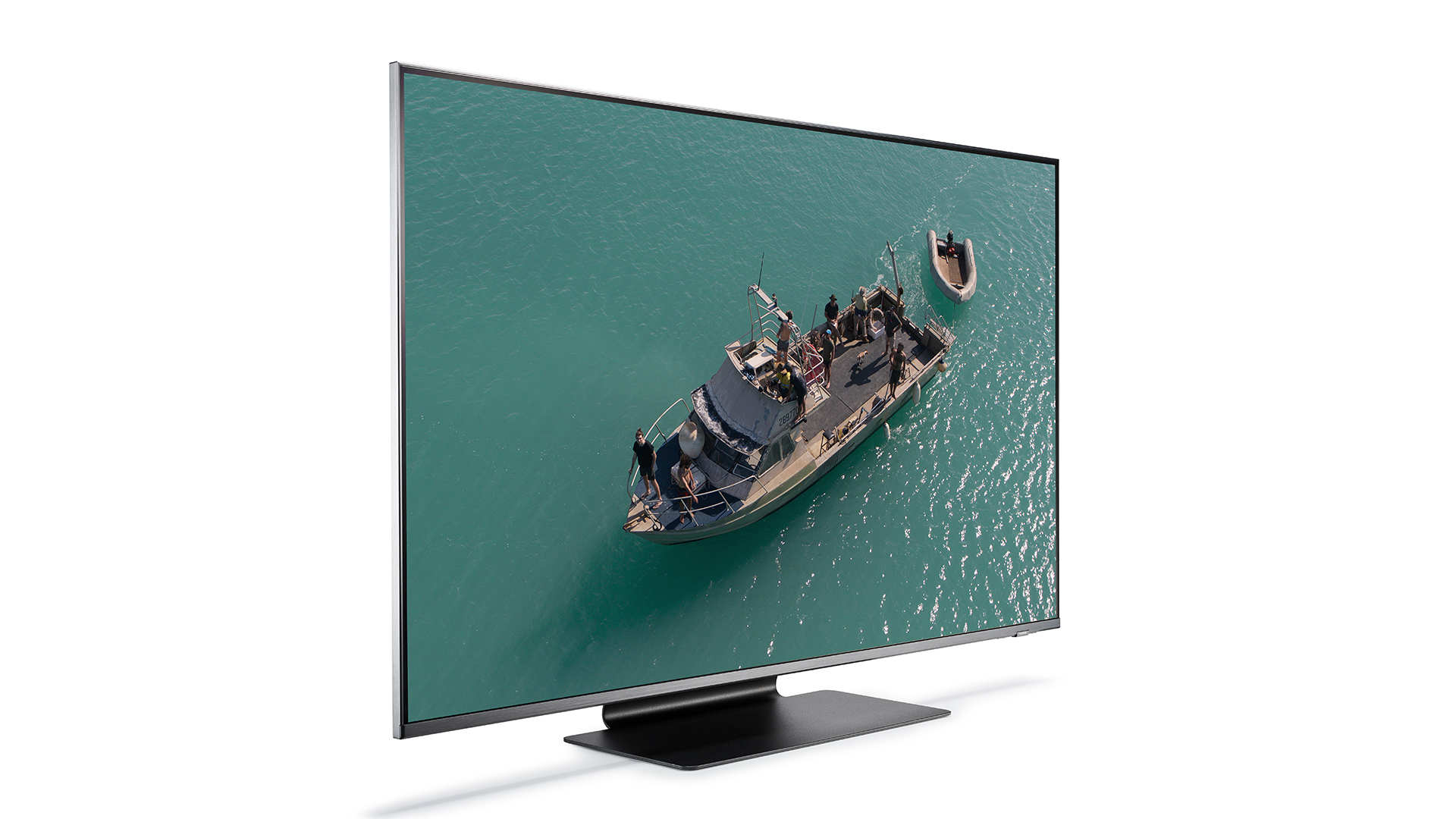
Apart from its screen being smaller, the Samsung QE50QN90B’s picture specifications are close enough to those of the previously tested QN95B 4K flagship TV to make differences nigh on impossible to spot. Which is no bad thing given how much we like the QN95B’s pictures.
The star of the show, for the most part, is the remarkable black levels achieved by its Mini LED and local dimming combination. Dark scenes enjoy black tones pretty much as inkily deep as those achievable with OLED TVs, providing a fantastically cinematic foundation for the many other picture strengths the TV provides.
Perhaps even more importantly, these spectacularly deep black levels by LCD TV standards are even less spoiled by backlight clouding and blooming inconsistencies than those of Samsung’s 2022 Mini LED debutantes. You’d expect that having 448 dimming zones to play with in such a small screen would limit the range (in terms of screen area) of potential ‘light creep’ around stand-out bright objects in an HDR picture, but the QE50QN90B’s ability to also limit the intensity of any small backlight blooms is also outstanding. The way the black bars above and below wide aspect ratio pictures remain free of clouding is particularly unusual – and much appreciated.
As well as reproducing bright objects that appear against dark backdrops with more intensity, the QE50QN90B delivers that intensity with more consistency. Presumably thanks to its new Shape Adaptive Light Control system.
While the QE50QN90B is more consistent with its brightness, it does still follow previous generations of Samsung local dimming LCD TVs in sometimes quite aggressively reducing the intensity of bright objects if they appear against dark backdrops. While this is well intentioned – born of a desire to suppress backlight blooming – it can be a little distracting at times, especially where there’s an abrupt switch from a bright to a dark shot.
Experience shows, though, that blooming issues with local dimming LCD TVs are typically much more pervasive and consistently distracting than the QE50QN90B’s occasionally obvious dimming activities, so it’s hard to argue with the logic of Samsung’s approach. Even though the brand does also want to have its cake and eat it, to some extent, by making the QE50QN90B exceptionally bright with light HDR images.
Joining the class-leading LCD backlight controls is a spectacularly wide and intense colour palette that avoids the thin, washed out look less talented brightness-focused TVs can suffer with. There’s extreme subtlety in this colour presentation too, even in dark areas, that’s been bolstered by Samsung’s move this year to a 14-bit colour processing engine.
The QE50QN90B continues Samsung’s tradition of delivering ultra sharp and detailed 4K pictures too, despite the screen being relatively small by today’s standards. What’s more, while the screen is obviously at its best with native 4K content, Samsung’s AI-assisted upscaling is also outstanding, adding detail and sharpness galore to HD sources without exaggerating noise or generating unwanted side effects.
The QE50QN90B’s enviable collection of picture talents make it a superb gaming monitor, too, delivering pictures as intense and crisp as they are responsive and smooth. Also, and importantly given some past Samsung failings in this department, its picture presets include enough flexibility to cater for a wide variety of picture tastes – including those centred around accuracy to creative intent – equally well. It’s no longer a case of Samsung’s aggressive picture way or the highway.
Sound
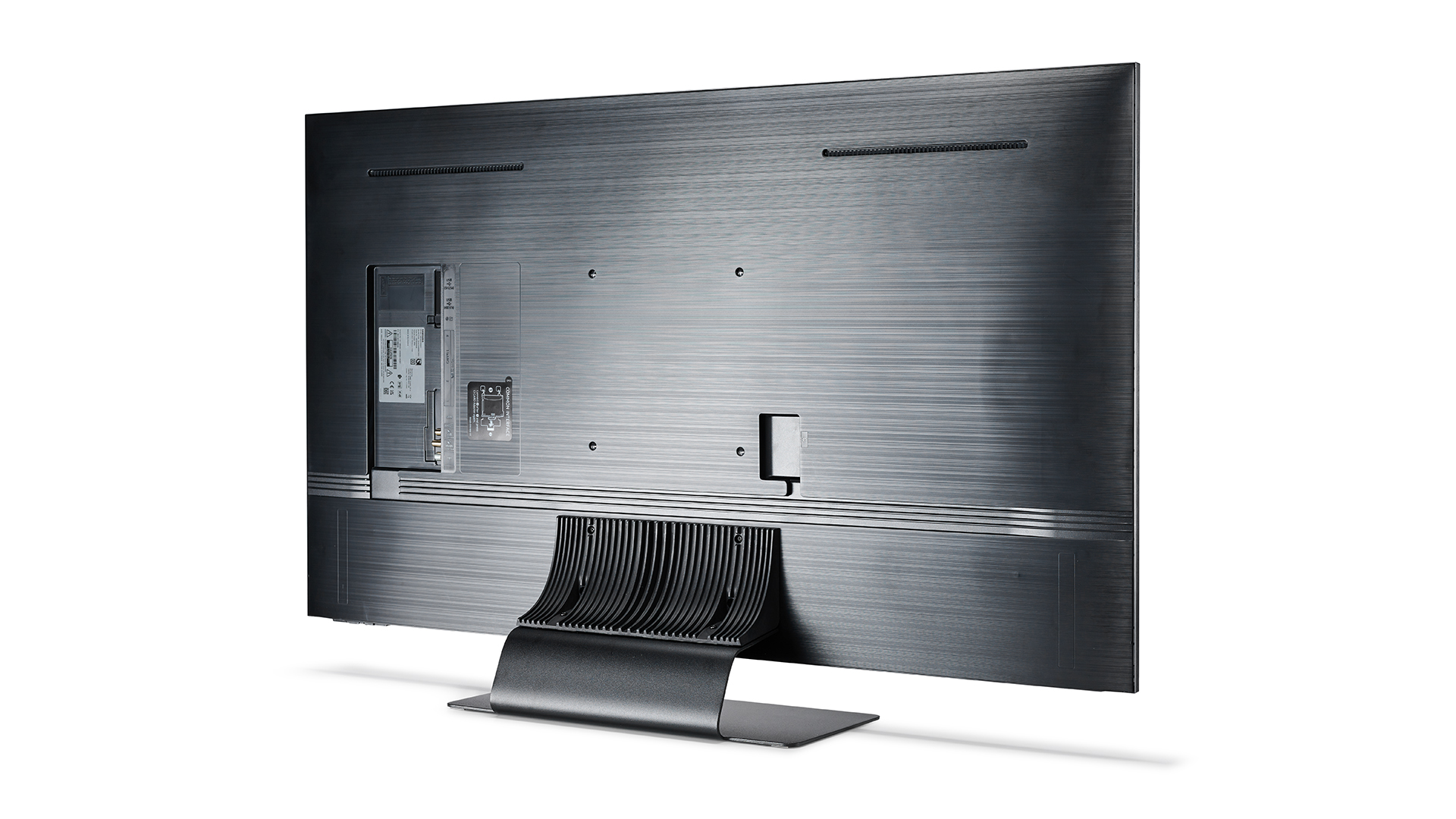
The QE50QN90B’s audio isn’t nearly as exciting as its picture quality. Yes, its OTS+ system does deliver on its promise of placing sound effects almost bizarrely accurately in the right place on or just off the screen. However, the speakers struggle to deliver the sort of volumes we’d hope to hear from a premium TV such as this, and its dynamic range is limited, leaving soundtracks feeling a little thin and short of impact.
Its biggest audio issue, though, is the way its sound struggles to project forward, leaving film and TV audio mixes sounding rather swallowed and as if everything is happening somewhere behind the screen. Not surprisingly this can leave you feeling rather distanced from what you’re watching.
Verdict
While a certain type of AV fan will always be drawn to the greater light stability and pixel-level light control you get with OLED TVs, the QE50QN90B’s combination of higher HDR-friendly brightness, peerless (by LCD standards) light controls and impressive image flexibility ensures it has more than enough charms of its own to make a convincing case for itself. Especially for people looking for a TV able to take on a bright room environment.
SCORES
- Picture 5
- Sound 3
- Features 3
MORE:
Read our review of the Samsung QN95B
Also consider the Philips OLED806
And here's our rundown of the very best TVs you can buy
John Archer has written about TVs, projectors and other AV gear for, terrifyingly, nearly 30 years. Having started out with a brief but fun stint at Amiga Action magazine and then another brief, rather less fun stint working for Hansard in the Houses Of Parliament, he finally got into writing about AV kit properly at What Video and Home Cinema Choice magazines, eventually becoming Deputy Editor at the latter, before going freelance. As a freelancer John has covered AV technology for just about every tech magazine and website going, including Forbes, T3, TechRadar and Trusted Reviews. When not testing AV gear, John can usually be found gaming far more than is healthy for a middle-aged man, or at the gym trying and failing to make up for the amount of time he spends staring at screens.
